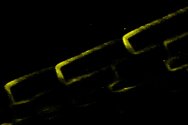
Project
Proteomic analysis of plant cell polarity
Living organisms require directional information for proper organ formation. In plants, cell polarity is yet not well studied, with only several known polar proteins. Our aim is to understand the chain of events leading to cell polarisation and find new polar proteins including the ones determining polar axes. We use an iterative proximity labelling approach to identify interactors of known polar proteins and analyse their functions among the plant kingdom.
Background
Cell polarity is characterised by asymmetric distribution of proteins and cell structures following directional axes. Polarity regulates asymmetric cell divisions or substance transport which then define organ morphogenesis. However, many known plant polar proteins are more likely readouts or clients of preexistent polar systems rather than polar identifiers themselves. Their polar localisation often depends on cytoskeleton, vesicle trafficking or hormone signaling that already have some direction and it is hard to determine the root cause.
Recently, a new polar protein family called SOSEKI (SOK) was found to have a robust polar distribution in various Arabidopsis tissues. The mechanisms of their localisation are still unknown, and due to their resilience to various stimuli and misexpression, the polar pre-determinants must reside among SOK direct or indirect interactors.
Aim of the project
The aim of our study is to find out new unknown polar proteins and identify key polar determinants among them. We will focus on Arabidopsis root meristem as it contains three dimensional polar axes. We are going to conduct proximity labelling screening of polar proteome using SOKs and a few of their already known interactors as baits fused to TurboID biotin ligase enzyme, and then identify labelled peptides by mass spectrometry. We will also expand our candidate list by iterating this approach using newly identified polar proteins as baits as well as exploring the interactome of several known polar domain markers. We hypothesise this extensive screening will lead to discovering proteins with either robust persistent polar localization or with temporal functions in transmitting polar signals.
Upon identification of polar candidates, we will perform their functional analysis and evolutionary studies (including exploring their functions in basal land plant Marchantia polymorpha). We will also investigate the interactions among new polar proteins to define the order of their actions in polarity establishment. Integrated with other polarity projects in the lab, it will unravel the chain of events resulting in polarisation and asymmetrical cell divisions.
Contact
Do you have a question about cell polarity, or would you like to join us as a student researcher? Please contact us.


